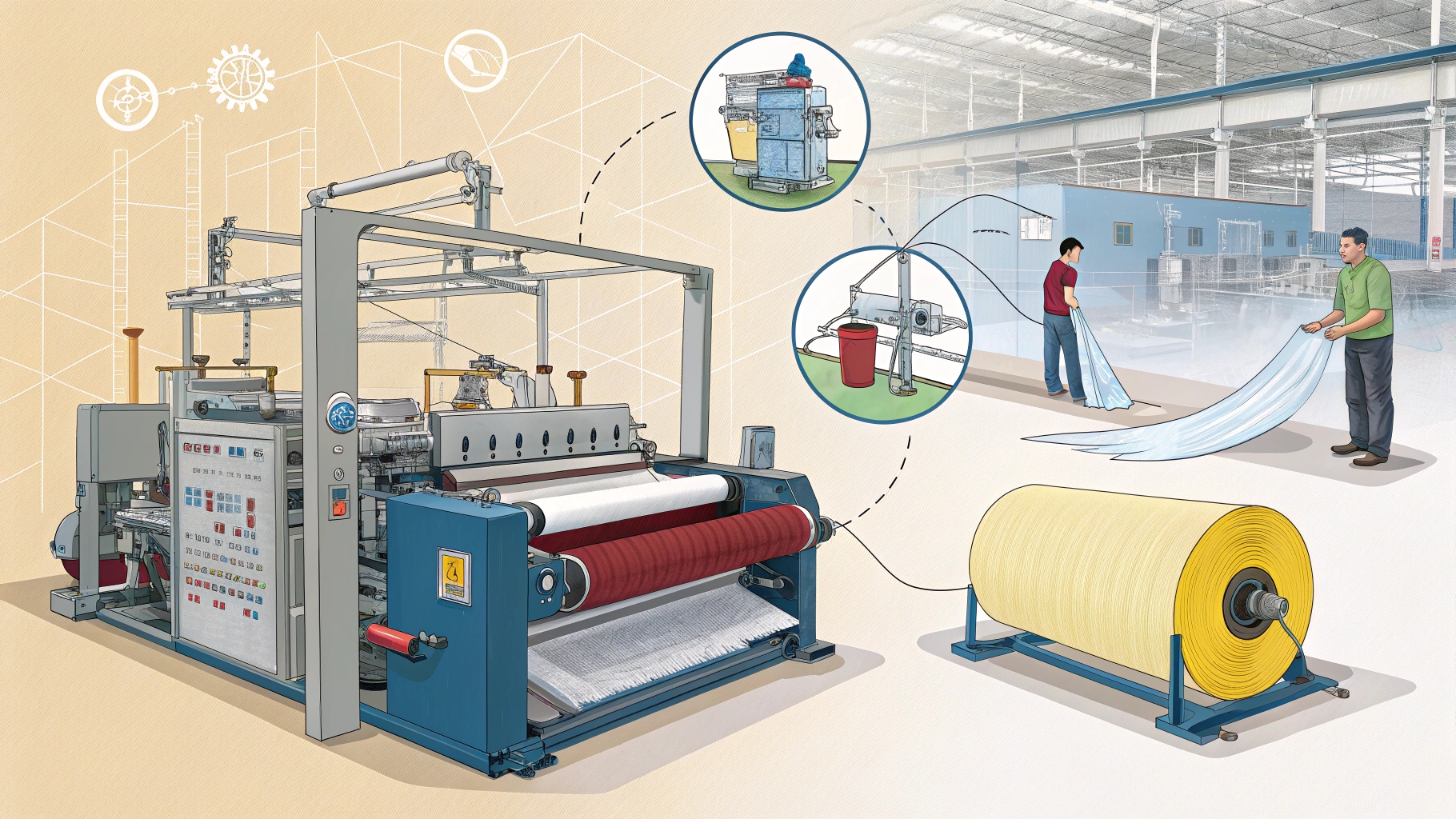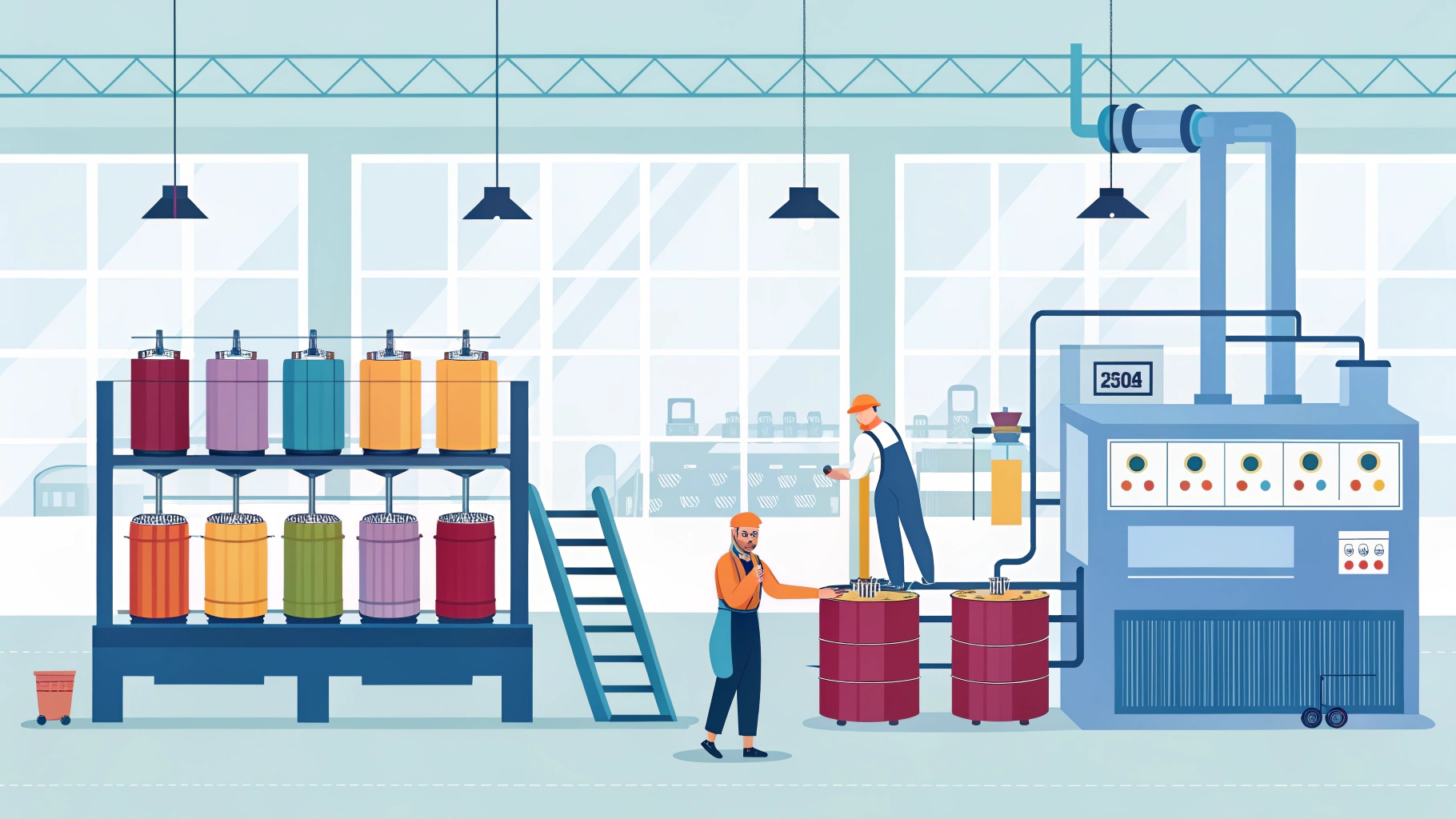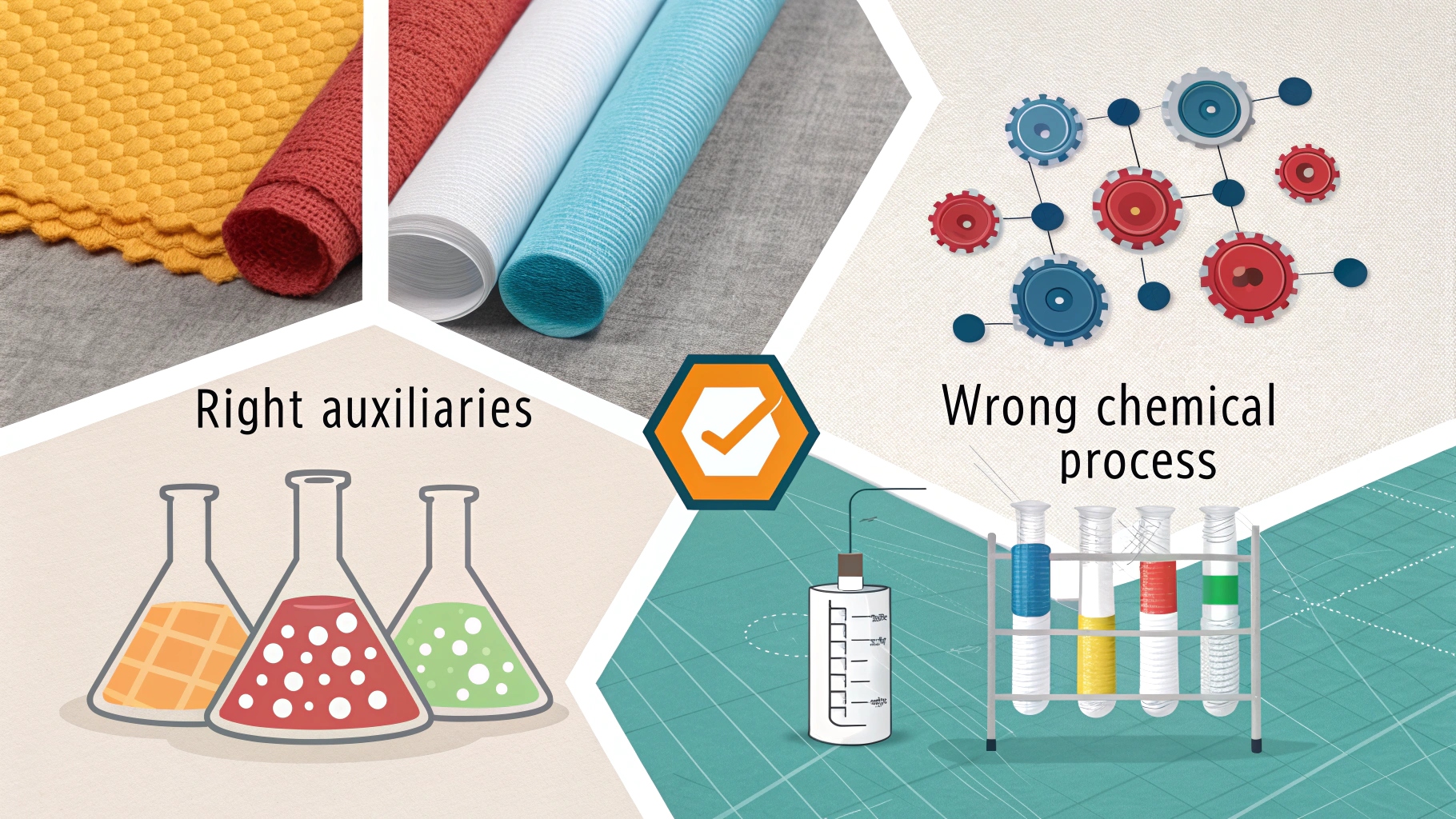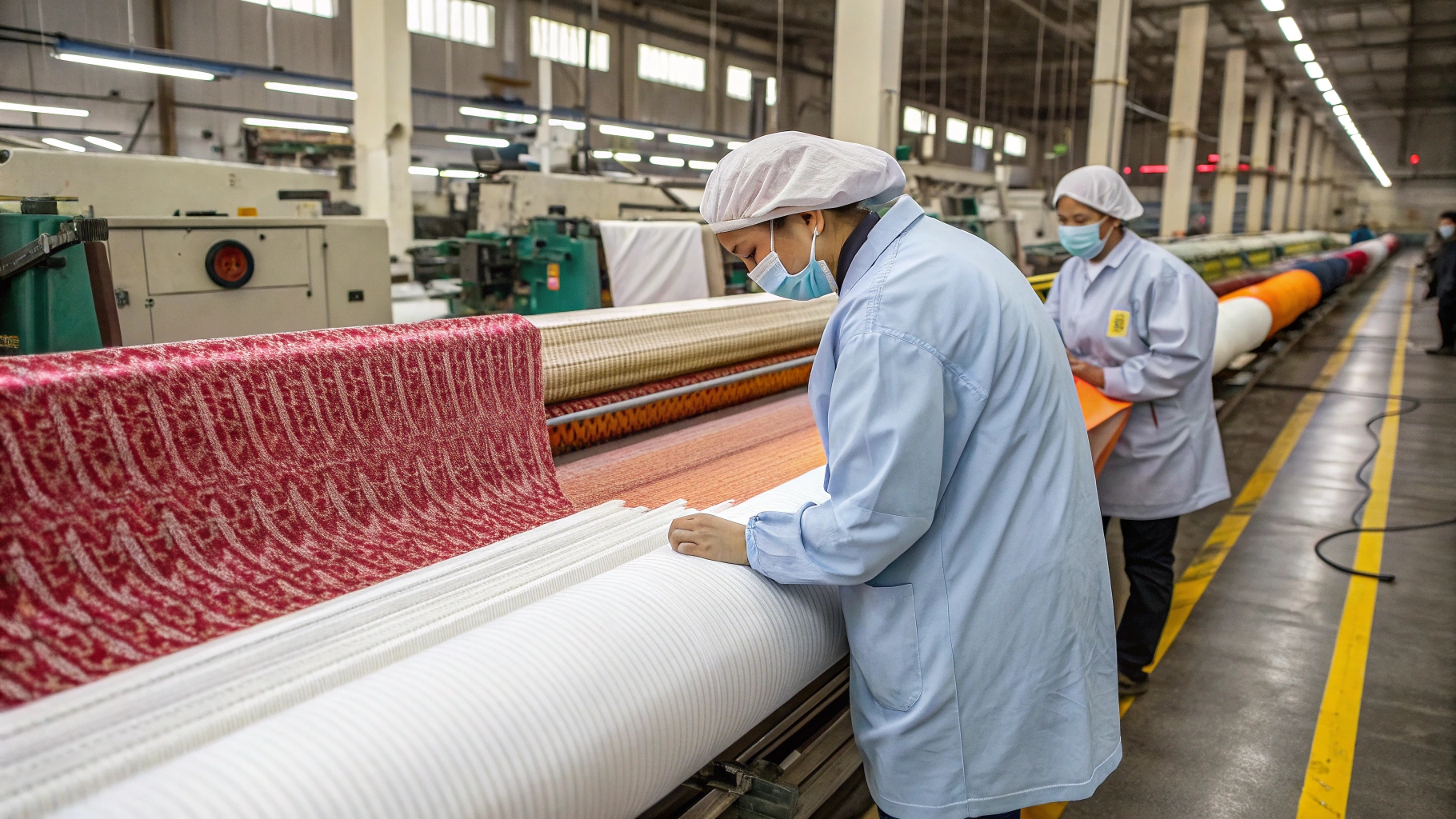Are your fabrics wearing out too fast? This problem can damage your brand's reputation and lead to costly customer returns. The solution is using the right textile auxiliaries.
Textile auxiliaries are essential for improving fabric durability. In dyeing, fixing agents create strong chemical bonds to lock in color and prevent fading. In finishing, softeners reduce friction between fibers, while cross-linking agents strengthen the fabric’s structure, making it more resilient to wear and washing.
Understanding how these chemicals work is key to producing high-quality, long-lasting textiles. But many people are not sure what these different chemicals are or what they do. Let's break it down piece by piece. I want to share what I've learned over my years in this industry to help you make better, more durable products. It all starts with knowing the tools you have available.
What are the auxiliaries in textile dyeing?
Does your fabric color fade or bleed after just a few washes? This makes your products look cheap and leads to unhappy customers. Using proper dyeing auxiliaries can fix this.
Dyeing auxiliaries are chemicals used during the dyeing process. They include leveling agents for even color, dispersing agents to keep dyes stable, and fixing agents to bond the color to the fiber. They are the first step in creating a durable, colorfast fabric.
When I first started, many clients like David, a textile engineer, faced issues with inconsistent color. The key to solving this was to look at the entire dyeing system, not just the dye itself. The auxiliaries are the support crew that ensures the main star—the dye—performs perfectly.
The Role of Different Dyeing Auxiliaries
-
Leveling Agents: These chemicals help the dye spread evenly across the fabric surface. Without them, you get blotchy, uneven color, which is an immediate quality failure. They manage how quickly the dye attaches to the fiber, ensuring a smooth, uniform result.
-
Dispersing Agents: Particularly important for polyester dyeing, these agents keep tiny dye particles from clumping together in the water. If they clump, they can't penetrate the fibers properly, leading to poor colorfastness and surface crocking.
-
Fixing Agents: This is where durability really begins. After the dye is on the fiber, a fixing agent creates a strong, almost unbreakable bond between the dye molecule and the fiber. This bond is what gives the fabric high wash fastness, preventing the color from bleeding and fading over time.
What are the auxiliaries of textile processing?
Is your fabric stiff or weak after dyeing? This can ruin the final product's feel and function, making it prone to tearing or pilling. Finishing auxiliaries are the answer.
Textile processing, or finishing, auxiliaries are chemicals applied after dyeing to improve a fabric's final properties. They include softeners for a better hand feel, cross-linking agents for strength, and water repellents for function. These directly boost the fabric's long-term durability.
In my experience, the finishing stage is where you transform a simple piece of cloth into a high-performance material. A customer might not see the leveling agent, but they will definitely feel the effect of a good softener or see the resilience from a cross-linking agent.
Key Finishing Auxiliaries for Durability
-
Softeners: These are crucial. They work by lubricating the individual fibers, which reduces the friction between them. When fibers rub against each other during wear or washing, it causes pilling and abrasion. A good softener acts like a protective shield, minimizing this damage and extending the fabric's life.
-
Cross-linking Agents: These are often called resin finishers. They work on a molecular level to form new connections, or "cross-links," between the cellulose or protein chains within the fibers. This reinforces the fabric's internal structure, making it stronger, more resistant to wrinkling, and better able to hold its shape after many washes. It fortifies the fabric from the inside out.
What affects the durability of a textile?
Do you think durability is just about using a strong fiber? Many people make this mistake and are then surprised when their high-quality fabrics fail. The truth is, many factors are at play.
Textile durability is influenced by the fiber type, the yarn structure, the fabric construction, and the chemical treatments it undergoes. The right auxiliaries protect and enhance the fabric's natural strength, while the wrong chemical process can severely weaken it.
I often consult with clients like David who are trying to balance performance with sustainability. He knows that you can't just pick a strong fiber and hope for the best. The entire production chain has an impact on the final product's lifespan. A poor choice in one area can undo the benefits of another. It's a system where every part matters.
A Breakdown of Durability Factors
| Factor | How it Affects Durability | Role of Auxiliaries |
|---|---|---|
| Fiber Type | The inherent strength of the fiber is the foundation. For example, nylon is naturally more abrasion-resistant than cotton. | Auxiliaries can't change the fiber, but they can protect it. For example, a softener can reduce wear on weaker fibers like cotton. |
| Yarn & Fabric Structure | Tightly twisted yarns and densely woven or knit fabrics are physically stronger and more resistant to snagging and tearing. | Cross-linking agents can help "lock" the yarns in place, preventing them from shifting and reducing seam slippage in looser weaves. |
| Chemical Processing | The dyeing and finishing process can either strengthen or weaken the fabric. Harsh chemicals or high temperatures can damage fibers. | This is where auxiliaries are most critical. Good fixing agents, softeners, and cross-linking agents add layers of protection and reinforcement. |
What should be done to make the fabric durable?
Do you want to create fabrics that last? Simply choosing one good component is not enough. You need a complete strategy that considers every step of the process to achieve true durability.
To make fabric durable, you must combine strong fibers with a tight fabric construction and apply the right auxiliaries. Using high-performance fixing agents in dyeing, and a combination of softeners and cross-linking agents in finishing, is essential for long-term resilience.
When I started my own company, my goal was to help clients build products they could be proud of. Durability is a huge part of that. It's not about one magic chemical. It's about a thoughtful, systematic approach. Here are the steps I guide my clients through.
A Practical Guide to Durable Fabric
-
Build a Strong Foundation: Start with the right fiber and a suitable fabric construction for the intended end-use. You can't make a weak fabric strong, but you can make a strong fabric even stronger.
-
Protect During Dyeing: The dyeing process involves heat and chemicals that can stress the fabric. Use high-quality leveling and dispersing agents to ensure a smooth process. Most importantly, use a powerful fixing agent. Locking the color in securely prevents degradation from UV light and laundering, which is a key part of durability.
-
Reinforce in Finishing: This is the final and most critical step. Apply a high-quality softener to reduce surface abrasion and pilling. Then, use a cross-linking agent to strengthen the fabric's core structure. This combination creates a two-level defense system: the softener protects the surface, and the cross-linking agent protects the interior. This synergy is what creates truly resilient, long-lasting textiles.
Conclusion
In short, textile auxiliaries are not just optional additives. They are fundamental tools that build durability into fabrics, from securing color to reinforcing fibers for a much longer life.






